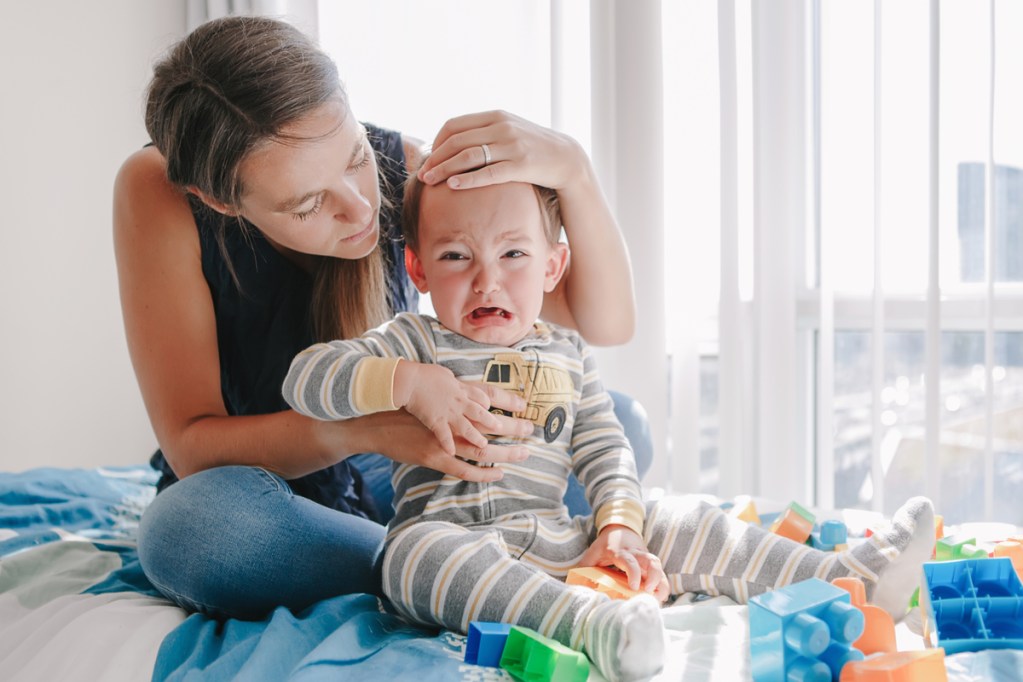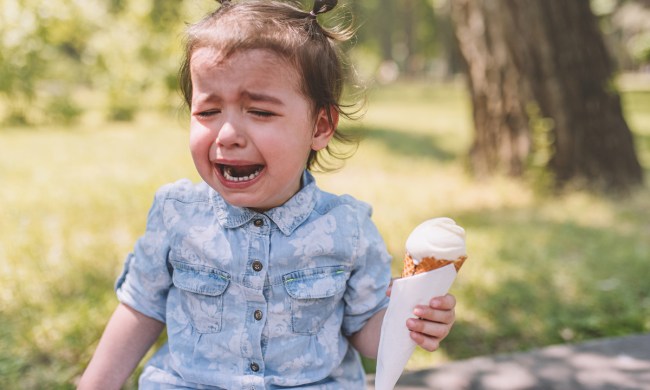Most of us have probably looked in the mirror to see dark circles staring back at us. It can be an unsettling. Most of the time, it happened on the back end of an all-nighter prepping for exams in college or more recently, after a couple of sleepless nights with one or more of the kiddos.
If you notice dark circles under eyes in kids, though, the sight can be just as upsetting, if not more. Children can have difficulty sleeping at times, too. Maybe you notice dark circles after your toddler has had a tantrum. Dark circles after a long cry aren’t that uncommon. If dark eyes are persistent, though, it may be time to take a closer look. What exactly causes dark eyes and when are they a cause for concern?
What are dark circles?

The skin under your eyes is more delicate than other parts of the body. According to WebMD, that delicate skin can sometimes become thinner. When that happens, the blood vessels are more prevalent. The result is dark circles. Dark circles will be more noticeable in adults and children with lighter skin tones. They still appear in those of us with darker skin tones but are harder to see.
Dark circles can pop up and disappear, especially in children, such as after a crying bout. They can also be consistent and when that happens, it’s important to search for the reasons behind the dark circles.
Causes of dark circles under kids’ eyes

If you’re noticing dark circles under your kiddo’s eyes on a regular basis, don’t panic. Many times, the cause is a simple one. Think back to those exam days or when your baby wasn’t sleeping through the night. You probably had dark circles during those first few months of parenthood. So, let’s explore the reasons behind dark circles under the eyes in kids, starting with the most common ones.
Sleep
A solid night’s sleep is vital for everyone, but especially kids. According to the Mayo Clinic, kids ages 3 to 5 need 10 to 13 hours of shuteye and that can include naps. Children from 6 to 12 need to be sleeping for about 9 to 12 hours. Teens need around 8 to 10 hours. That’s a lot of sleep.
Kids, like adults, can have difficulty sleeping or have their sleep patterns disrupted. For example, if the family has been traveling out of your time zone, your child’s sleep pattern may be out of whack. Busy after-school schedules or a string of late nights out with the family during school breaks may also mess with sleep. Snoring can also interrupt sleep. Then, there’s the dreaded screen time, which absolutely interferes with sleep. So, if you are seeing dark eyes under the eyes, the first stop is sleep. Take a hard look at how much your child is sleeping. A few solid nights in a row may just get rid of those dark circles.
Dehydration
Getting kids to drink enough water can be a daily struggle in many households, especially if you have athletes in the house. Dehydration makes the skin under the eyes thinner. The thin skin under the eyes exposes those blood vessels, marking the appearance of dark circles. We’ve all heard the drink eight glasses of water a day rule.
Children’s Health advises that the amount of water kids need to drink does vary according to temperatures and level of activity. A general rule of thumb for kids and adults is to divide your weight in half. The resulting number is the amount of water children and adults should drink in ounces every day.
That’s a tough one for most of us. Great sources of hydration for kids are fruits like watermelon, veggies, milk, smoothies, and of course, water. Sports drinks are OK, but eyeball the sugar content. If your kids don’t like the taste of water, add fruits like lemons to it.
Congestion
If you’re noticing dark circles under the eyes and your child has a cold or is congested from allergies, the two could certainly be connected. When the nose is stuffed, the blood vessels become enlarged, and this can cause dark circles. The dark circles should resolve once the congestion is relieved.
Congestion from allergies isn’t so simple, though. Allergies can be seasonal or year-round. Congestion from a cold or allergies can sometimes turn into a sinus infection. Sinus infections require a course of antibiotics. So, if your kiddo is constantly stuffy with dark circles, it’s probably time to talk to your pediatrician.
Asthma
Many times, asthma and allergies go hand in hand. Kids with asthma or one with undiagnosed asthma symptoms may experience dark circles, too.
Anemia
Is your child a picky eater? Sometimes, anemia can cause dark circles under the eyes in kids. Anemia is a lack of iron in the blood. If a child is anemic, that could cause dark circles and pale skin, along with other health issues. A fix may be as simple as including more iron-rich foods in your child’s diet or even supplements. So, consult your doctor. A blood test can determine if your child is anemic or not.
Salty foods
Kids love their chips, chicken fingers, pizza, fries, and popcorn. Too much salt can cause those bags to form under the eyes and may make dark circles more pronounced. If you think salt may be the culprit, dial back the salty snacks and foods.
Genetics
Some kids and adults have lighter complexions. A lighter skin tone will make those blood vessels under the eyes more pronounced in the form of dark circles. If you or your partner has battled dark circles, the ones in your kiddo may be a result of genetics.
Injury
Dark circles may appear because of a head injury. If you have a sporty kid who plays contact sports and recently had a head injury, contact your doctor or head to the emergency room immediately if dark circles under the eyes crop up suddenly.
When to call your doctor about dark circles under the eyes in kids

Sometimes, dark circles have a simple cause, like returning from a vacation or jet lag. Other times, dark circles under the eyes in kids can have different causes that might require a doctor’s supervision, such as anemia, asthma, allergies, a sinus infection, or a head injury. If dark circles seem to come out of nowhere or don’t resolve on their own with improved sleep and hydration, contact your doctor. That’s what they’re there for. It’s always best to err on the side of caution.
Dark circles can happen in kids and adults. The skin under the eyes is delicate. When it becomes thinner, the blood vessels underneath become more pronounced. Causes range from simple, like lack of sleep, to a bad cold to more troublesome, like allergies, asthma, and anemia. Sometimes, dark circles are genetic for people with lighter skin tones. If dark circles don’t go away or they get worse, talk to your pediatrician. There are underlying health issues that can cause dark circles under the eyes in kids. So, it’s always a good idea to have a chat with your pediatrician whenever you are concerned.




